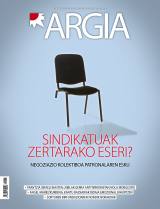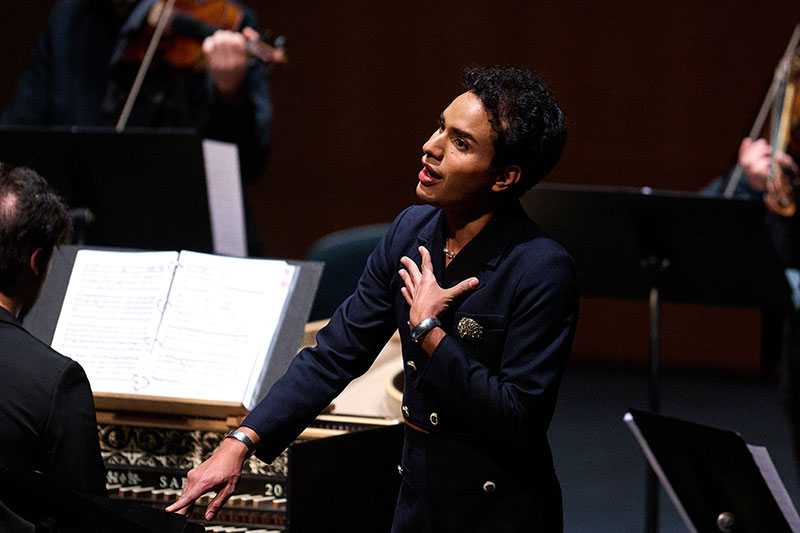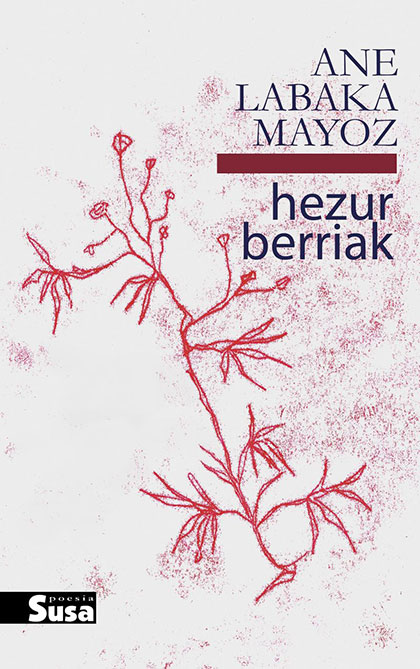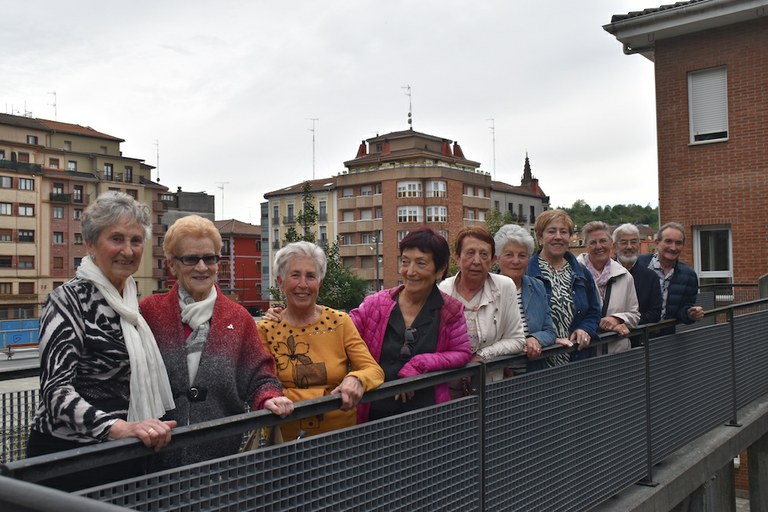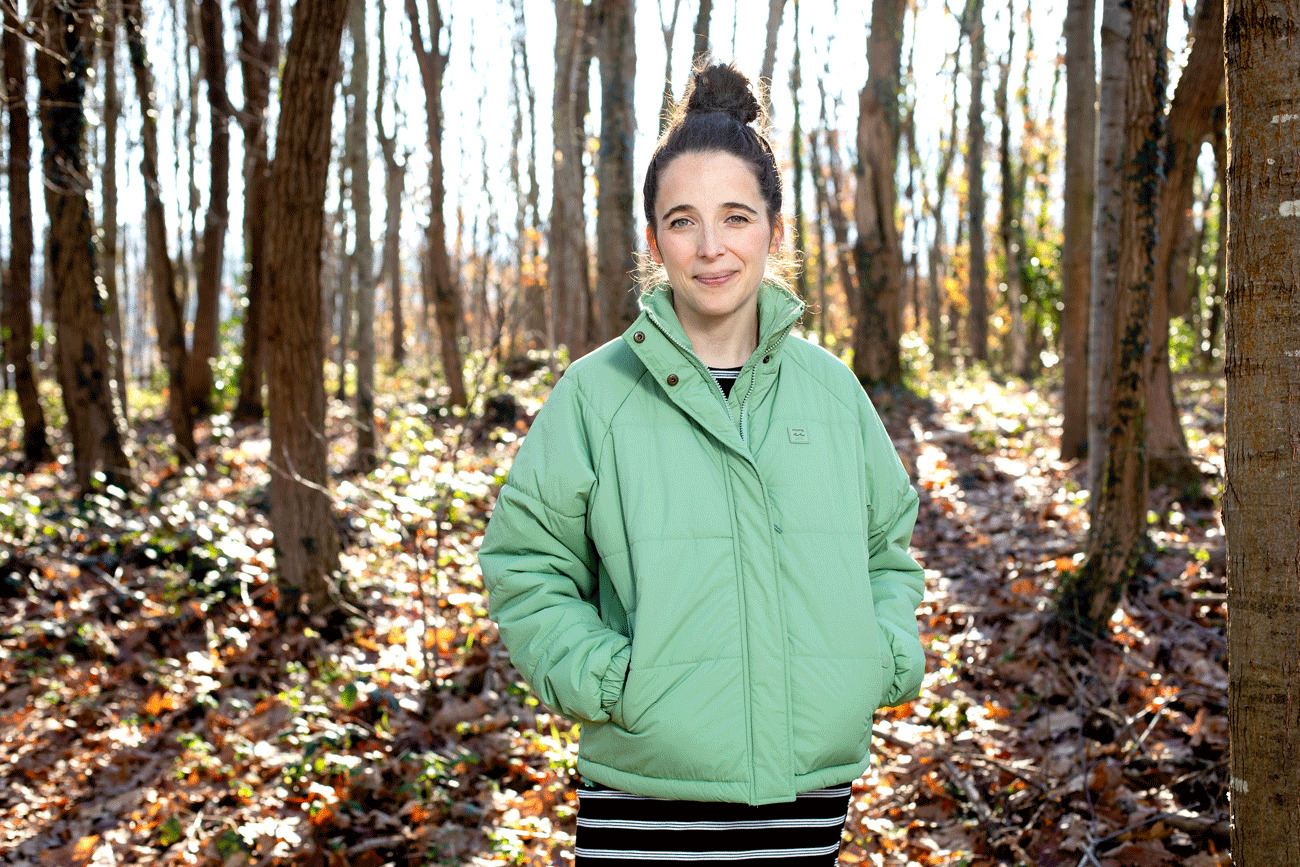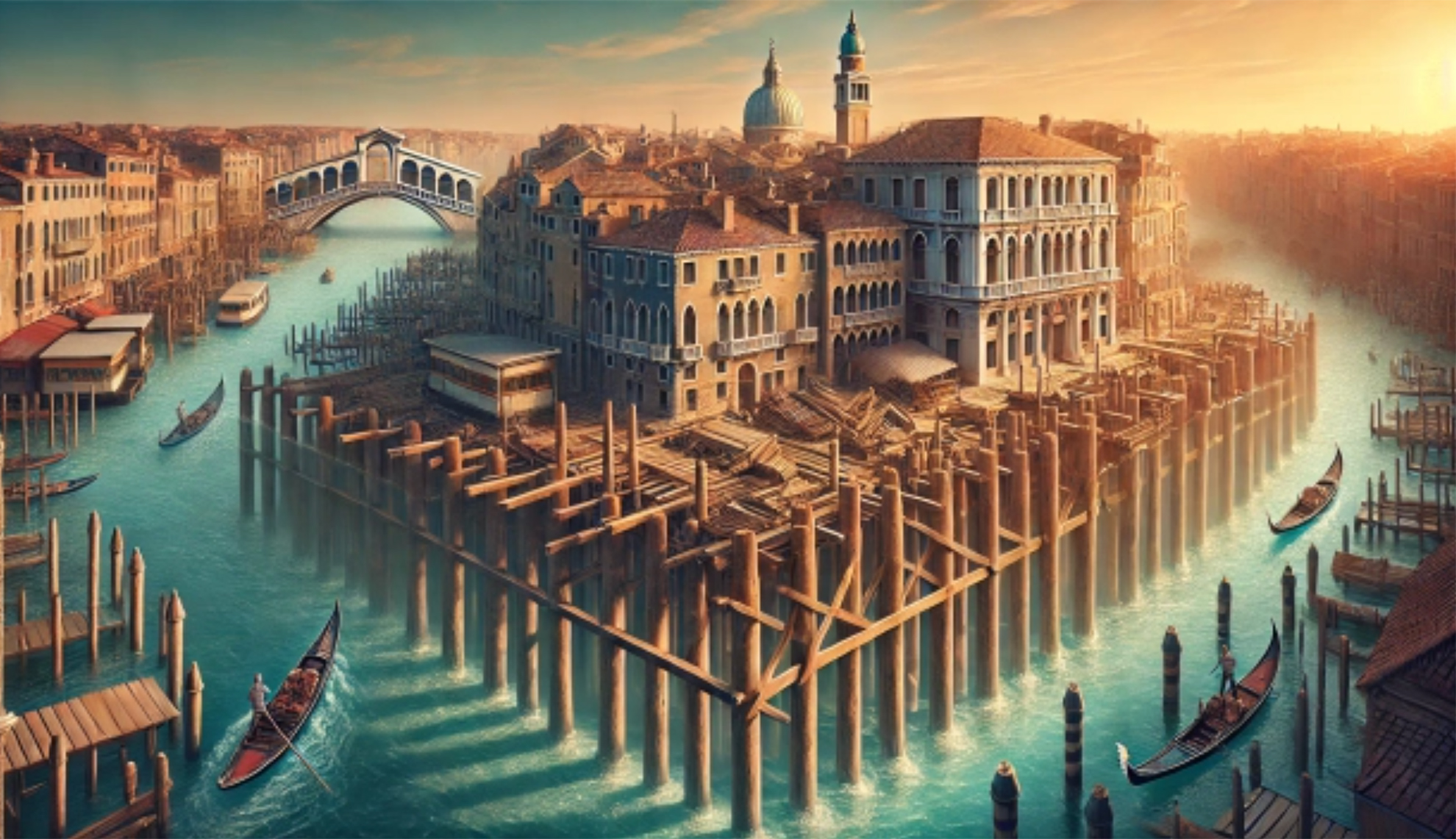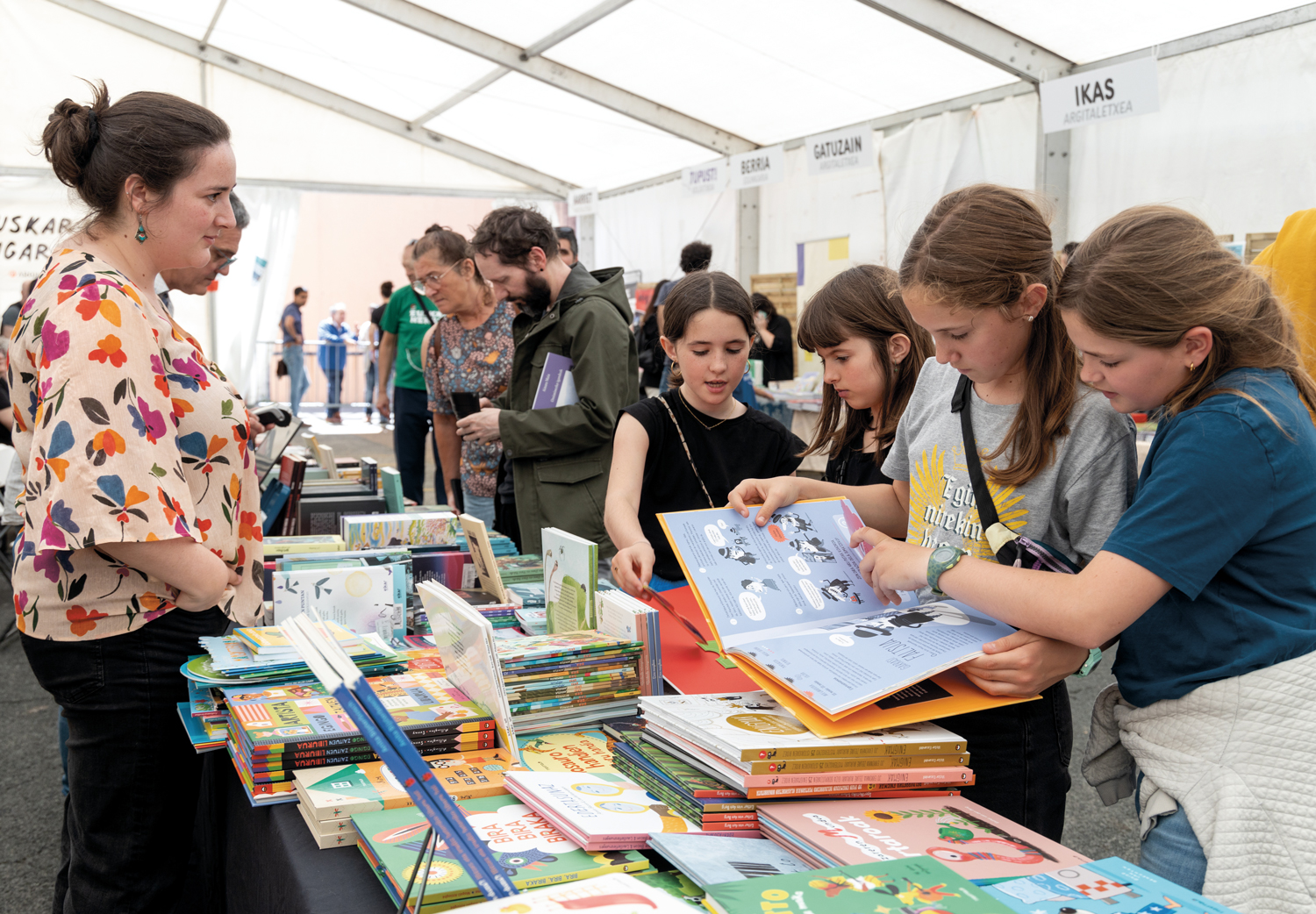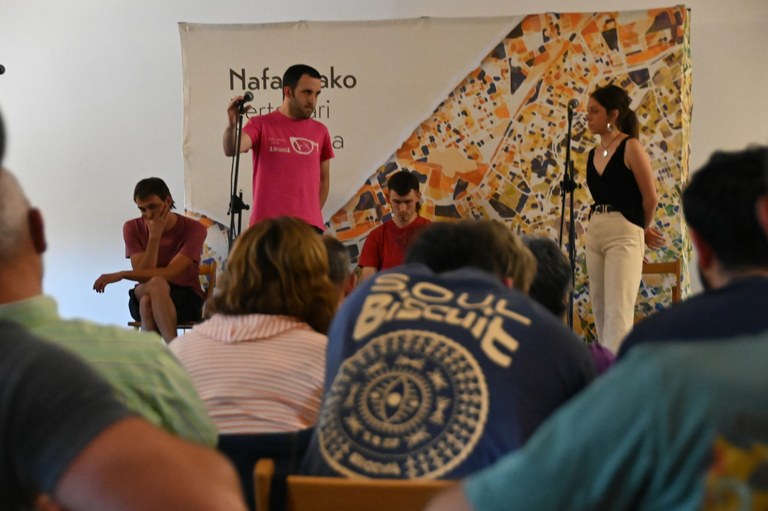"The artist is not a person who is prayed for the occurrences"
- Susana Talayero (Bilbao, 1961) is considered a painter despite having worked in various fields. The Museum of Fine Arts of Bilbao offered him a retrospective in June, becoming the first woman to do so until now and the youngest artist. We talked to him the days before the end of the exposure.
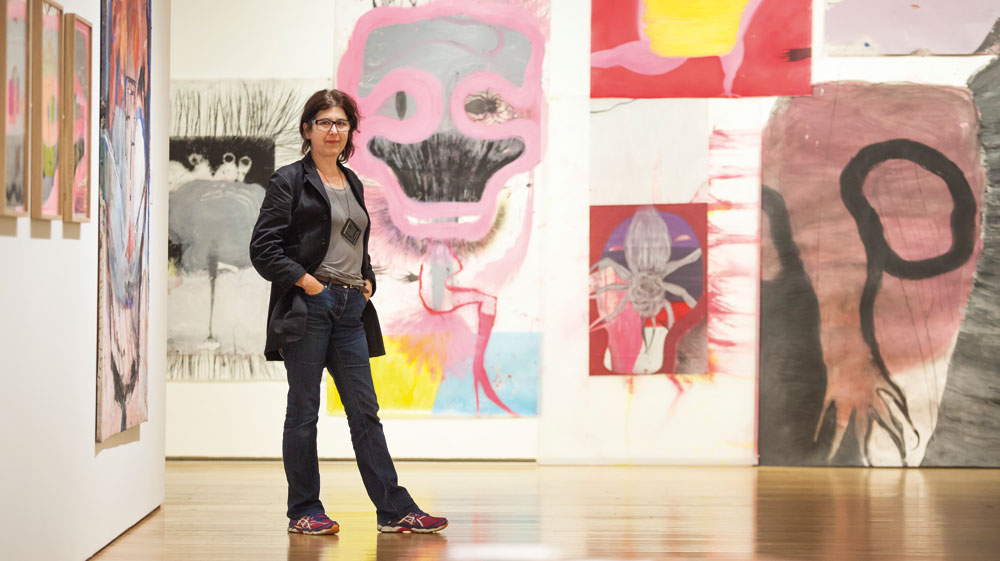
How did the idea of making an exhibition come about?
I was asked to do a retrospective exposition. At first I thought it was an excess, because I'm not 97 years old, I'm still working! However, I was given the opportunity to look back in a different way, that it was not a kind of coffin, but a review of the work.
I've had a lot of time to prepare the exhibition, about a year and a half. It has been good for me, because it is not easy to decide what to include and what to leave out in such an exhibition. In addition, space is fine, but it's small, especially for my work, which is large-format. You could easily complete the exhibition with 10-12 large-format works. However, I didn't want to make a very fine selection process, but I wanted space to overflow. I've shown my work, of course, but I've taken advantage of the museum to experiment.
“I started to make a chronology, I started from the beginning. I wanted that as we approached the exhibition, people could see the processes and not the results.”
You had it clear from the beginning.
It was clear to me that, as the artist Valcárcel Medina said, I had to ask myself whether the museum normally does not, and whether I have not previously tried what I have to do. For me, this exhibition is a challenge, I wanted to experiment with the exhibition space, without any shame. Of course, the exhibition space is a museum and, therefore, it has weight connotations in different areas, but, in my opinion, if you are an artist and you enter that space, you have the right and the obligation to do something more daring. Not only show your jobs, but jump.
How has the assembly gone?
I set out to do a chronology and I started at the beginning. I wanted that as he approached the exhibition, people could see the processes and not the results. I mean, I wanted to create a dynamic and show that the artist is not someone who comes up with an output, but is a much more complex and continuous work. They sometimes explain this question of ideas in the media: it is a topic that greatly harms art.
I created three areas very united with each other: the first is Rome. It's made up of works from 1986-96, when I lived in Rome. It follows the years 2000, Jardín, and then the Cabezudos and the video La Murata, the most recent works.
“Rome is not that far away. I have maintained the relationship through my friends and, little by little, I have also made the employment relationship. I’m quiet, Rome and Biona will never end”
When and why did you go to Rome?
Bilbao seemed to me a hard and gray city, and for several reasons I escaped it, without any scholarships. I finished Fine Arts School and ran away.
I was in Rome for ten years. At first it was an experiment: after a few months, to see what was going on, because I didn't have the economic means to live in such a city. Finally, the city catches you and that's where you're completing your life. I have always been far from the Spanish institutions of Rome, neither scholarships, nor academies, and I am not proud to say so. I lived in a very local environment. In any case, this local world is replete with foreigners who live or are always in it. This is the history of the city, with multiple layers and strata, and that's really interesting.
What brought you?
At the bottom, he opened my head, a hack. Meeting with other people, seeing other things, seeing things from many points of view... You open up. Then, in life, there are many moments of contraction. I think it's a matter of life to leave, even if you come back later. In my case, it was Rome, and for another, however, there will be another city.
“Flowers are similar to organs, they are not a plant element, for example, a margarita. From my point of view, flowers remind the body, have a hard and dense presence and are made from holes.”
What relationship do you now have with the city?
It took me a lot to go back to Bilbao, it was a strange land for me. At first, you lived in nostalgia, and that's even worse, because, first of all, you don't live now, you get into a loop, continuously related to loss, and as a consequence of that you fall into the victimization, into the swamp of the victimization, as a friend of mine says. Loss and victimization devour your bowels and prevent you from living. So, it seemed to me that I had to do something else: first of all, I had to stay in touch with the city: Why disrupt the connection? In addition, Rome is not that far away. I have maintained the relationship through my friends and, little by little, I have also made the employment relationship. I am quiet, Rome and Biona will never end.
Let's look at the second part of the exhibition. This Garden attracts attention.
The garden installation consists of various drawings and paintings. Each piece is autonomous, but in the museum I've decided to do something different, never done before: to compose one piece with many pieces. It's a stacking facility, a community of pieces that come together forming a single piece. It occupies almost an entire wall of the living room and part of the floor.
I called him a garden because I've collected the pieces I made in the 2000s: flowers, stems, organs... For me, flowers are like organs, they're not a plant element, for example, a margarita. From my point of view, flowers remember the body, have a hard and compact presence and are made of holes.
You see all the pieces and, at the same time, none.
In all creative work, even in life, you have to make decisions, and even though it makes you so sad, you always leave something out. Obviously, in a collection like this, you don't see the pieces. But I didn't want to put a bunch of pieces in order to show as many jobs as possible, but I wanted to create a unit through various planes.
In addition, if you continue with the metaphor of the garden – since it is not a Versailles garden, orderly and rational – when you are in a garden it takes a path, you see it, then something else appears... It's a place of exploration, just like artistic work, and when you find something, you've left something behind. It has to do with the look: you build your little stories. However, I have organized this piece in detail, both formally and chronologically. It's not a random garden. Somewhere else, it may change, but here it is, and there it is.
Do you think you've taken the exposure?
Yes, to a large extent. I hope the catalog would also have been in the room. We have worked hard to make another catalogue. I wanted it to be a book, to pick up the environment of his work. In general, such catalogues include a list of works and, in the end, a chronology and a photograph of the artist. That was not what I wanted. It's outdated. I wanted to put other figures, put the pieces inside a tour, through a picture script, as they are part of the work. It seemed to me that I should be richer, more complex. From the beginning, I thought it had to be very much related to the exhibition, and we got into it. If you don't work hard, you don't get it.
What are your working days like?
Artistic work is methodical. The question of inspiration and topics must be left aside. I work mostly in the study. Of course, not all artists do so, but I, in that sense, am traditional. In those days when I didn't have anything, I had a free study. For me, the study was more important than the house itself.
From my point of view, the studio is a room of its own. You can also share it with another person, of course, but it's a place to think and make art. It's not a ivory tower, what happens in the study isn't there, it goes out, and what happens in the study, in short, is related to what happens outside. For me, the walls of the studio are painful, it's not a closed and isolated place, that mythical place where the artist locks up and creates works of art. On the contrary, for me, study is an open, ingenious and porous place. It is located between the interior and the exterior, but at the same time it is an intimate and personal place.
And from now on what?
Thanks to the exhibition I have seen that there are connections and differences within my work. I'm not saying that I've advanced or gone backwards, but only that there are connections and cuts. In the same way, we observe that in some cases we are constantly going around the same thing, although we do not know exactly what that thing is... Sometimes, that's artistic work, working without a specific destination: another way of researching. And I've realized, once again, that I love my job.
There's that myth of age, which is already over when we get to age X. But in creative work, you decide how far you're going and how. What's more, in some things I'm stronger than when I was 20 years old.
By Samuel Mariño + Gabta Consort
Director and violin soloist: Assisted by Stefano Barneschi.
What is it about? Works by Purcell, Händel, Geminiani, Vivaldi and Graun.
When: May 9th.
In which: At the Baluarte Palace in Pamplona.
... [+]
hezur berriak
Ane Labaka Mayoz
Susa, 2025
Pond of Venice, year 452. Prompted by the Huns' invasion, several inhabitants of the interior of the Italian peninsula took temporary refuge in the swampy area. But the Lombard invasions came in a few years, and it would become a permanent home for those immigrants. It was a... [+]
Between January and May 2015, after finishing my studies at the age of 25, my friend Irati Astobieta and I toured Chile, Argentina and Uruguay as part of the Calabazan Wandering Project. Using the poetic tool of whispered poetry, we gave Basque poems from mouth to ear in the... [+]
A fund for the State of Israel has bought most of the macrofestivals in the Spanish state. I'm talking about To. Whether it’s a festival with a beach side driveway or a festival with tattooed hardcorettes, an exchange of 1,400 million euros to build homes in Israeli colonies in... [+]









